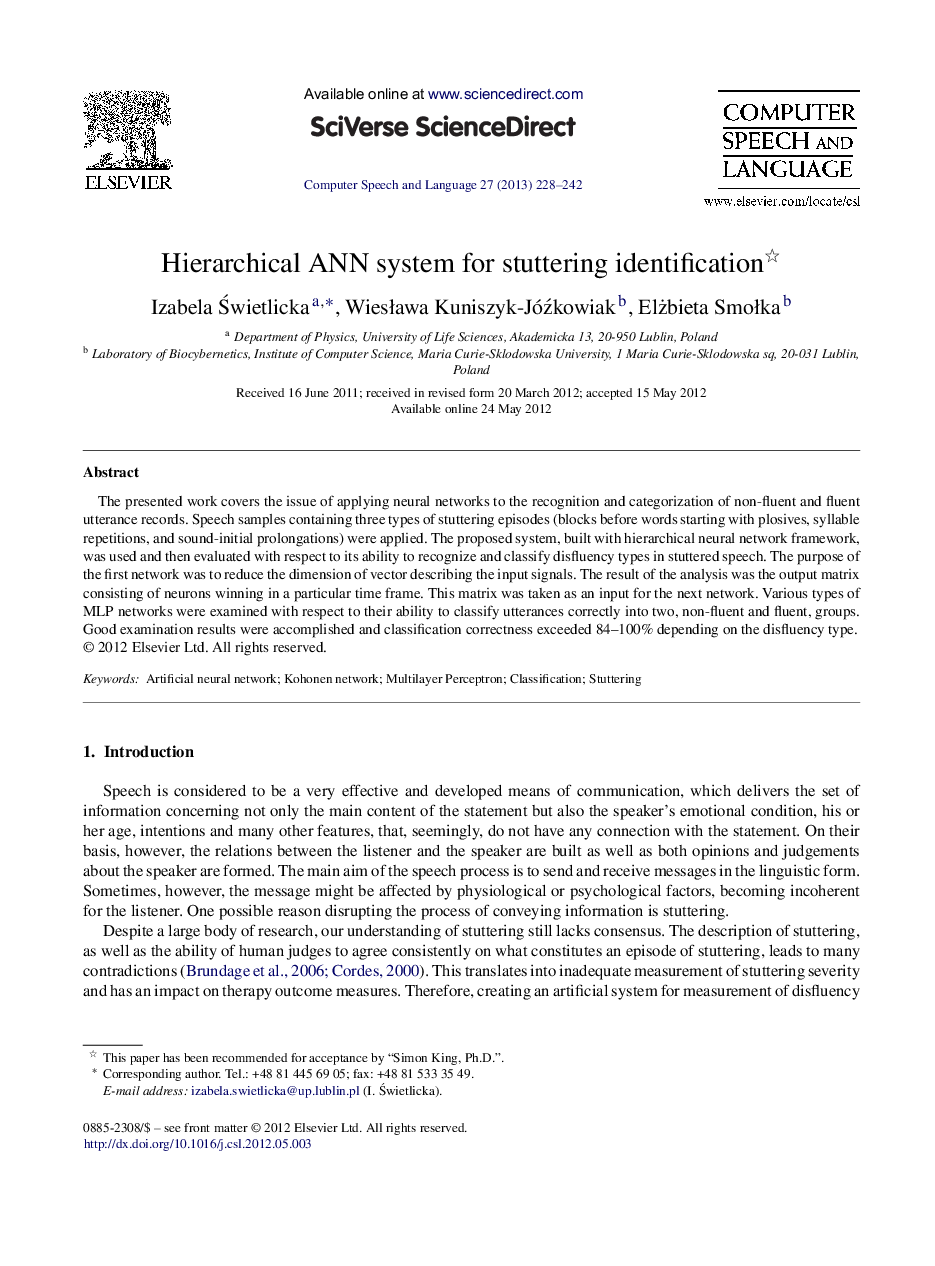| Article ID | Journal | Published Year | Pages | File Type |
|---|---|---|---|---|
| 563112 | Computer Speech & Language | 2013 | 15 Pages |
The presented work covers the issue of applying neural networks to the recognition and categorization of non-fluent and fluent utterance records. Speech samples containing three types of stuttering episodes (blocks before words starting with plosives, syllable repetitions, and sound-initial prolongations) were applied. The proposed system, built with hierarchical neural network framework, was used and then evaluated with respect to its ability to recognize and classify disfluency types in stuttered speech. The purpose of the first network was to reduce the dimension of vector describing the input signals. The result of the analysis was the output matrix consisting of neurons winning in a particular time frame. This matrix was taken as an input for the next network. Various types of MLP networks were examined with respect to their ability to classify utterances correctly into two, non-fluent and fluent, groups. Good examination results were accomplished and classification correctness exceeded 84–100% depending on the disfluency type.
► Three disfluency types classification process was conducted. ► Speech samples recognition and identification was processed with the use of hierarchical artificial neural networks. ► Artificial neural networks are able to recognize and categorize non-fluent speech utterances.
